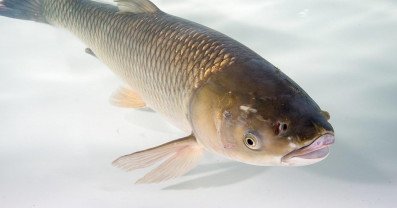Best weather for fishing
What weather conditions are ideal for fishing? When do fish tend to bite more actively? And why do fish sometimes seem uninterested in biting? Let's explore the relationship between weather and fishing, focusing on regions like America and Europe.
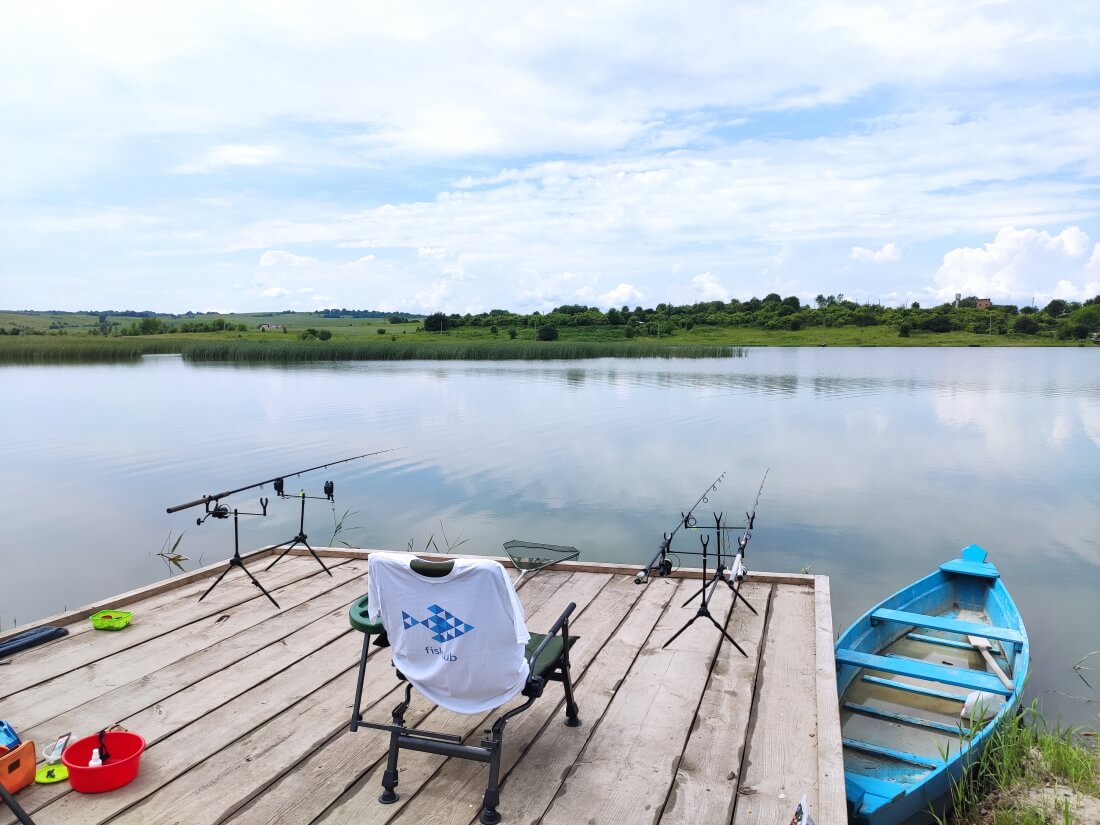
When it comes to fishing, the weather plays a crucial role in determining the success of your angling adventure. While the perfect weather for fishing may not always align with the most comfortable conditions for anglers, as the saying goes, "beauty requires sacrifice."
Factors that affect biting or when a fish bites?
The activity of the fish is affected by:
- Cloudiness;
- Atmospheric pressure;
- Air temperature;
- Water level and its transparency;
- Precipitation;
- Flow;
- Wind.
Next, we will take a closer look at each of the factors that can affect fish biting in one way or another. Yes, sometimes it happens that according to all visible factors, the fish should not bite, or vice versa - the bite should be crazy, but for some unknown reason the fish behaves unpredictably. Let's hope that soon we will completely solve the mystery of biting, but for now let's consider the factors that affect the biting of fish and against which the fish rarely go, so you can safely orient yourself on them.
Cloudiness
Other weather-related factors, such as cloud cover and wind, can also impact fishing. Cloudy days, for example, can create a sense of security for fish, making them more willing to venture out and search for food. Additionally, wind can create underwater currents and bring bait closer to the fish, making it easier for them to find a meal.
However, it's essential to note that fishing is a complex activity influenced by various factors, and no single weather condition guarantees success. Fish behavior can vary depending on the species, time of year, and specific body of water. Therefore, it's crucial for anglers to adapt their strategies and techniques accordingly.
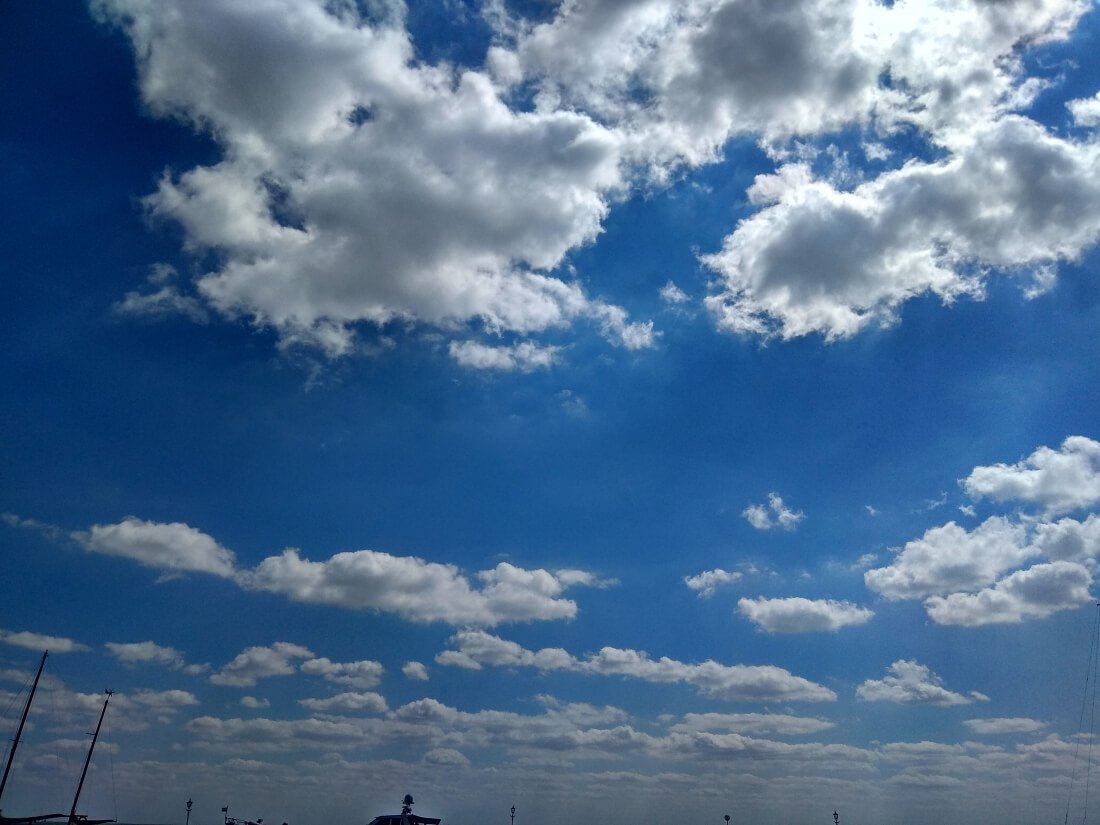
Barometric pressure
One key factor to consider is barometric pressure. Fish are highly sensitive to changes in pressure, and certain levels can trigger their feeding behavior. Many anglers believe that a falling barometric pressure, associated with an approaching low-pressure system or storm, can lead to increased fish activity and more bites. On the other hand, rapidly rising pressure, indicative of clearing weather, might make fish less inclined to bite.
"Normal" barometric pressure
The term "Normal" barometric pressure is typically referenced within the framework of the international standard atmosphere (ISA). It serves as a benchmark or reference point employed by scientists and meteorologists to describe the average air pressure conditions.
So, what does it entail?
When using a barometer, it is described using two different units of measurement. In the United States, we employ "inches of mercury" as our standard unit. The ISA standard for normal barometric pressure is 29.92 inches of mercury. On the other side of the pond, in Europe, they use a distinct scale known as hectopascals (hPa), where the standard for normal barometric pressure is 1013 hPa.
Both 29.92 inHg and 1013 hPa represent the same value, which is the mid-level pressure in the ISA standard.
Barometric Pressure Fishing Cheat Sheet
Feeling somewhat reminiscent of a meteorologist? Alright, I understand. And my aim is to assist all of you in effortlessly hooking fish. Here's a handy barometric fishing chart that serves as a reference, enabling you to promptly discern barometric pressure levels and the corresponding fish species that can be targeted.
Air Pressure Definitions:
- Low: 29.00 – 29.53 inHg
- Moderate: 29.53 – 30.12 inHg
- High: 30.12 – 30.99 inHg
| Species | Good Barometric Pressure for Fishing (inHg) | Optimal Weather | Optimum Barometric Pressure Trend | Worst Conditions |
| Bass | 29.992 – 30.99 | Improving or brightening conditions. Calmer days. | Pressure rising. Low to high | Sustained low pressure |
| Walleye | 29.53 – 30.99 | Sustained periods of bright and clear days. | Sustained high pressure going to low | Sustained low pressure |
| Crappie | 29.92 – 30.50 | Generally settled weather, occasional showers. | Mid pressures either rising or falling | Sustained high pressure, sustained low pressure |
| Catfish | 29.53 – 30.99 | Changeable conditions. | From low to high or high to low | Sustained low pressure |
| Trout | 29.00 – 29.92 | Any conditions apart from clear skies. | Low to high or immediately following a high | Sustained high pressure |
When can you go fishing?
If the pressure is within the table values, then you can go fishing and the chances of returning with a rich catch are much higher. The Fishing Forecast for the selected point takes into account all important factors.
How to determine if the fish will bite?
The bite of fish worsens with a bad indicator of atmospheric pressure. Now we know that the fish bite should be good at a stable or gradually decreasing atmospheric pressure, but it is necessary to take into account not only the stability of the pressure, but also its normal indicators.
But it is worth considering that atmospheric pressure, although it affects the intensity of fish bites, is far from the only indicator that should be taken into account when predicting fish bites. All factors that affect biting should be taken into account.
Air temperature
Another important element is temperature. Fish are cold-blooded creatures, meaning their body temperature adjusts to their environment. As a result, they are influenced by water temperature changes brought about by the weather. Generally, fish tend to be more active and feed more voraciously in warmer water. Therefore, a mild, comfortable temperature is often considered favorable for fishing.
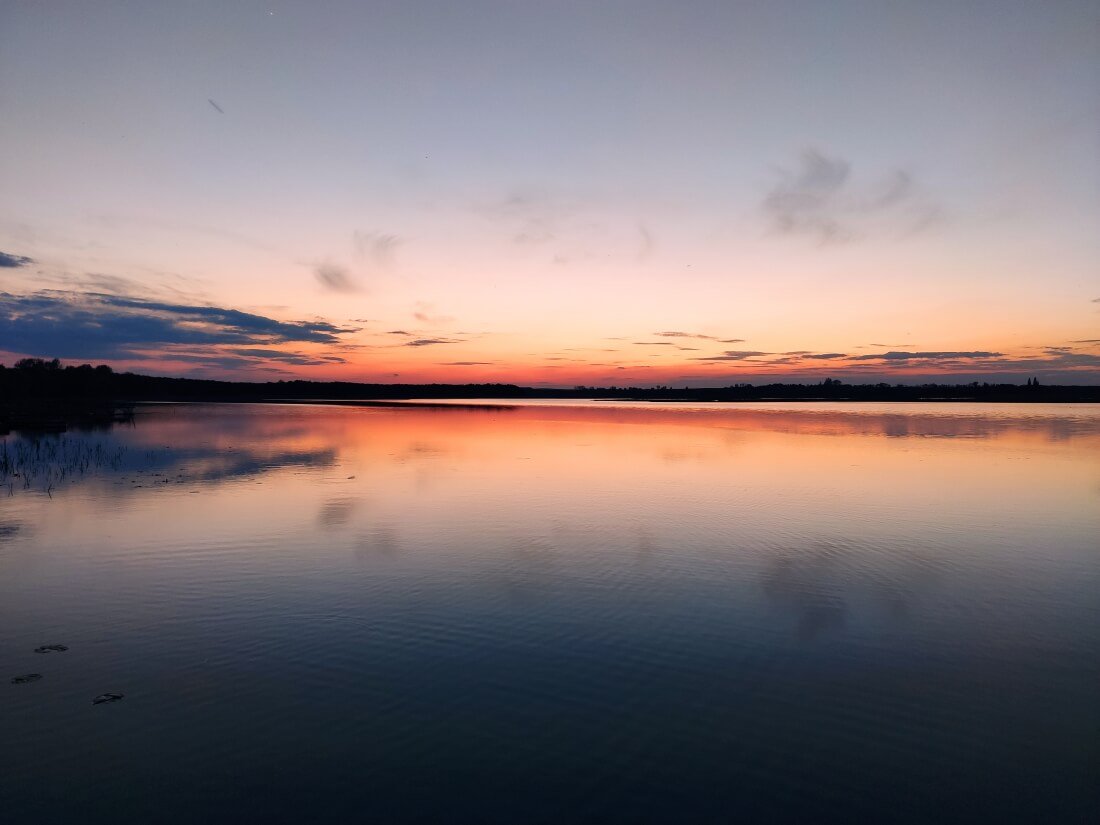
Those types of fish that lead an active lifestyle at night, such as carp, on particularly hot days can bite only after sunset and until morning, and during daylight hours they can completely refuse food. At the same time, when the temperature has risen slightly after a long cooling period, it is quite possible to expect fish activity. Such a slight jump in temperature by a few degrees can turn out to be quite a significant lever for her to bite. In the same way, the effect of temperature on predatory and peaceful fish should be separated. Yes, the predator is forced to hunt more actively by lowering the temperature, which leads to the fact that the peaceful fish thinks more about rescue and protection, and not about food. That is, the conclusion suggests itself: it got colder - the biting of the predator improves, it warmed up - the biting of peaceful fish.
Water level and transparency
You should know that in clear water, the fish will always be much more careful than in cloudy water. In clear water, it will look at the bait much more carefully and may refuse to bite on any of the baits for reasons only visible to it. In addition, the probability of being spotted by a predator increases in clear water. Therefore, the fish has to go to a great depth or look for all kinds of natural shelters, in which it will be possible to easily escape from the attack of toothy fish.
But do not rush to conclusions that it is better to fish in muddy water. The fact is that excessively cloudy water can make it difficult for fish to find bait. Therefore, it is best when the water is a little cloudy, the fish feels hidden from the predator's view, but also sees your bait well.
If, after all, the transparency of the water is very low, my advice to you is to use a bait that will be better visible under water, such as a maggot, pearl minnow or corn. Likewise, the intensity of fish biting may depend on changes in the water level. Its bite worsens if the water level decreases. A fish panics and is afraid of being completely without water, because it thinks less about food, and more about where to find a hole or a deeper place, so that the lack of water does not threaten it.
If, on the contrary, the water level rises, the fish begin to show more activity. Perhaps this is due to the fact that the fish becomes confident that it will have enough water for a long time, and also to the fact that with the water level, additional feed comes into the reservoir from the banks, the larvae of various bugs and worms are washed out of the soil.
The water level depends not only on precipitation, melting of snow and ice, drought, but also on human activity.
Table of water temperatures for fishing
Water temperature can have a very serious effect on fish biting. It is important to remember that the main factor is not so much the temperature of the water as the temperature range of the fish.
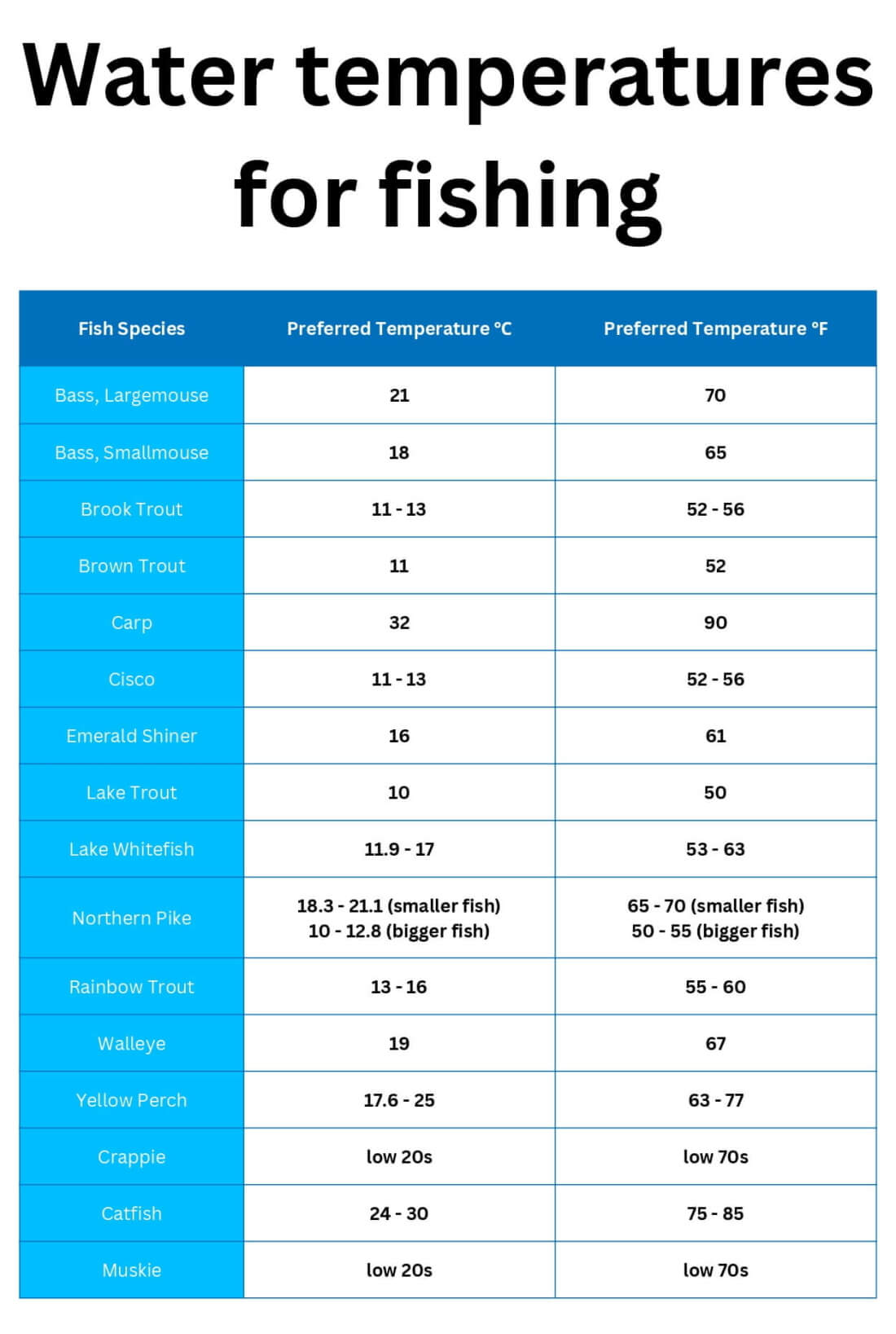
Precipitation
Precipitation, including rainfall, drizzle, and snowfall, has a direct impact on fishing conditions and can significantly influence the behavior of fish. Understanding how precipitation affects fishing can help anglers plan their fishing trips and increase their chances of a successful catch.
Light rainfall or drizzle can be beneficial for fishing in several ways. First, it creates natural noise and ripples on the water's surface, which can help mask angler movements and make it easier to approach fish without startling them. Additionally, rain can wash insects and other food sources into the water, attracting fish and stimulating their feeding activity. Anglers often find that fish become more active and willing to bite during or immediately after a light precipitation event.
However, heavy rainfall can present challenges for anglers. It can result in rising water levels, increased water flow, and turbid or muddy water conditions. Fish may become more elusive, seek shelter in deeper areas, or move to calmer sections of the water, making them harder to locate and entice. In such cases, adjusting fishing techniques, such as using larger baits or lures and targeting areas with less turbulent water, can improve your chances of success.
It's important to note that the impact of precipitation on fishing can vary depending on the specific fish species, body of water, and local conditions. Some fish species are more active during rainfall, while others may be less inclined to feed. It's advisable to research the preferred behavior of the target fish species and consult local fishing reports or experienced anglers for specific insights.
Monitoring weather forecasts and keeping an eye on precipitation patterns can help anglers determine the best times to go fishing. It's also essential to have appropriate fishing gear and clothing, including rain gear, to stay comfortable and protected from the elements.
River Flow
When it comes to fishing, one often overlooked but crucial weather factor is the river flow. The flow of a river plays a significant role in determining fish behavior and ultimately affects your chances of a successful catch. River flow refers to the volume of water passing through a river at any given time. It can be influenced by various factors, including rainfall, snowmelt, and dam releases.
Understanding how river flow impacts fishing is essential for anglers seeking to optimize their fishing strategies. Low river flow, typically associated with drier weather or drought conditions, can present challenges for anglers. In such situations, fish tend to concentrate in deeper pools or areas with sufficient water depth, seeking refuge from the shallower and faster-moving sections of the river.
As a result, targeting these deeper pools or areas can improve your chances of finding actively feeding fish.
Wind. How it affects?
How can the wind affect the bite of fish? Two factors play a role here - the direction and strength of the wind. Well, of course, the wind temperature will also depend on the direction. A warm southerly wind will be useful for fishing if the air and water temperature is not high, and cold weather has been there for a long time or has been there for the last few days. In this case, the warm wind will make the fish behave more actively and look for food.
Naturally, a cold, northern wind can have a positive effect on the fish bite only when the temperature stays at a high level for a long time, due to which the oxygen in the water becomes less and less. Such a wind will activate the lethargic fish and make them remember that it is time to go out for feeding.
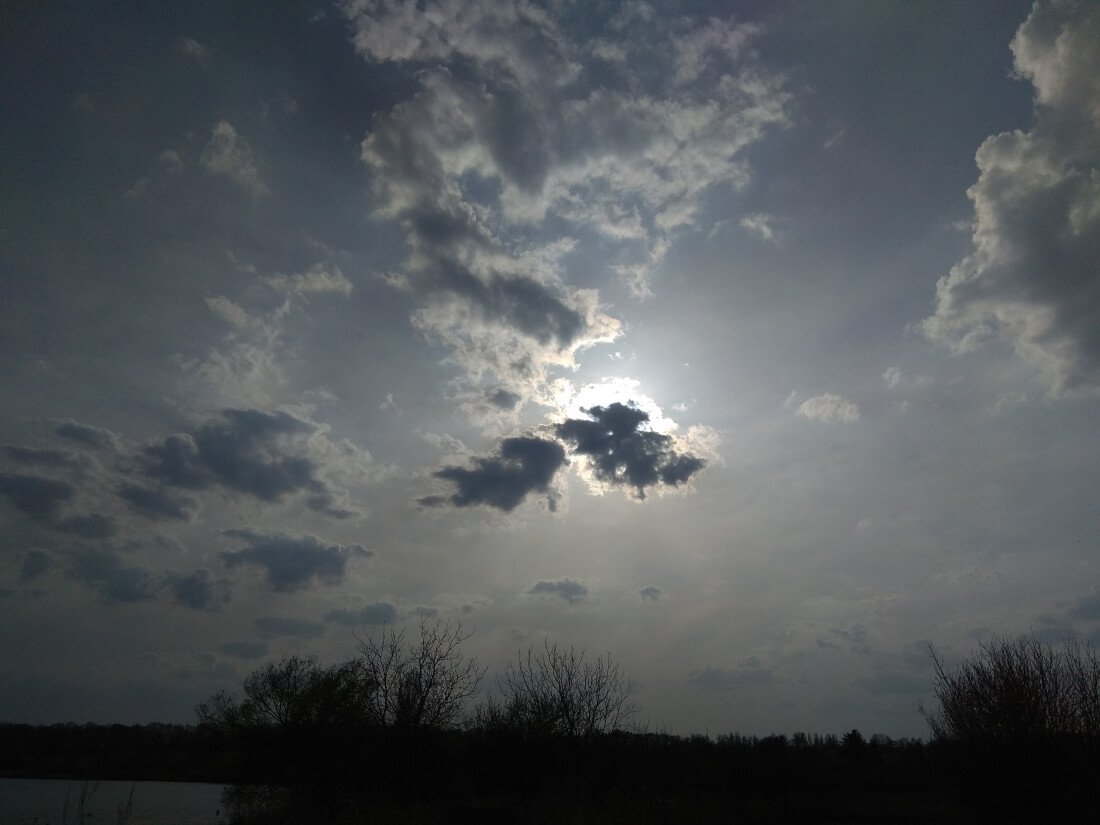
An equally important factor is the force of the wind. It is best when the wind creates ripples on the surface of the water. With such a wind, the fish is not so aware of what is happening on the shore and it behaves more relaxed. A strong wind, which creates big waves, can scare the fish a little, besides, the bait on the bottom can create intense oscillations in such a wind, which can alert the fish. However, when the strong wind calms down, those who like to feast on various larvae such as bream and crucian carp, come to the shores washed by the waves to find for themselves a piece of delicacy washed by the waves from the shore, so the fisherman can use this with great success.
Conclusion
In conclusion, while the best weather for fishing may not always align with the angler's comfort, understanding the impact of weather conditions on fish behavior can significantly enhance your chances of a successful fishing outing. By considering factors like barometric pressure, temperature, cloud cover, and wind, anglers can make more informed decisions and increase their chances of hooking their prized catch. So, embrace the elements, be prepared for some sacrifices, and enjoy the thrilling pursuit of fishing amidst the ever-changing weather.



